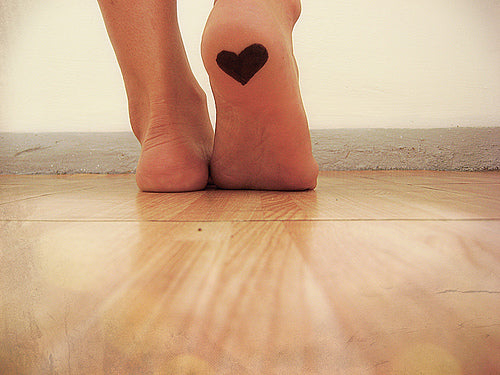What Your Feet Can Tell You About Your Heart
Posted by JB Smith, Co-Owner on

Whether you’re 4’1” or 6’3”, your feet are the part of your body farthest away from your heart. And yet, they can tell you a great deal about the health of your cardiovascular system.
Do you struggle with cold feet (and not only while saying your wedding vows)? You bundle up in wool socks, and the weather begins to thaw, but despite all this, your toes still feel like icicles in your winter boots?
This may be a sign of a heart problem, such as congestive heart failure, which can wreak havoc on the circulatory system and keep blood from getting to where it needs to be. Because blood needs to travel all the way down the body, the feet are most likely to feel the effects of a poorly-circulating heart. Hairless feet or toes may also be a sign that the heart is having extra trouble pumping blood around the body and to the extremities.
Then there’s digital clubbing, which presents itself as toes that bump upward at the tips due to extreme swelling. While it’s still unclear whether this condition is directly caused by heart disease or rather is simply a sign of it, many doctors associate clubbing with serious cardiac ailments. Other warning signs are bulging or purple veins, overall paleness or difficulty finding a pulse on the top of the foot or inside of the ankle.
Cardiovascular disease is the leading cause of death in our nation. To raise awareness, the American Heart Association led the effort nearly 50 years ago to develop February’s annual American Heart Month. So for the remainder of the month, make sure to keep an eye on your feet.
The feet are useful for more than how they look in a pair of new shoes and as a way to get from point A to B. Always take into account how your feet and toes feel – they might be telling you something important about your heart.
And remember that you can always take advantage of your feet as a prevention measure for future illnesses. Taking a walk of a mere 3,000 to 4,000 steps per day can greatly reduce your chance of heart disease. That’s between 15 and 20 city blocks – definitely doable on a daily basis in the right pair of walking shoes!
